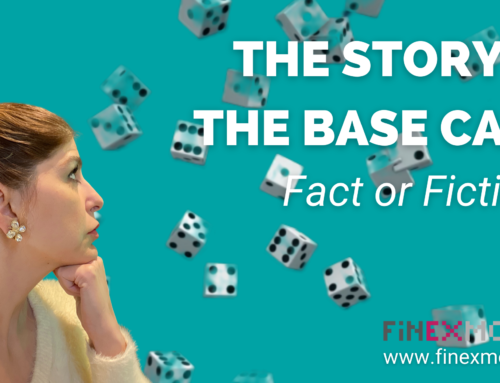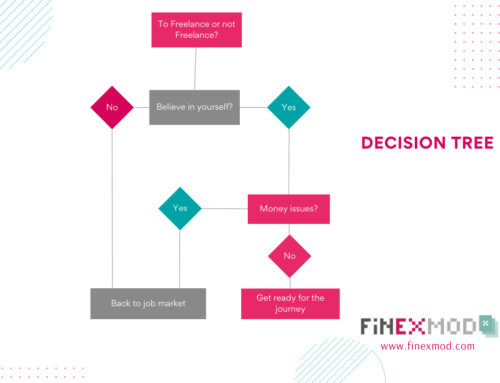A key element of during the due diligence of a project is to prepare realistic forecasts of cash needs
and sources to fund the cash needs during construction phase of the project.
In this article, we will go through Project Cost Estimates table and a Financing Plan of a typical project finance model which comes under Sources and uses of funds table.
The summary sources and uses of fund is incorporated in almost all project documents including project information memo, appraisal reports and project presentations.

The Uses
The Uses statement shows the total cost of a project and incorporates all elements in a manner that is both clear and relevant.

The Sources
The purpose of the sources statement is to show that that the funding to support the total estimated cost of the project are identified and eventually as the project progresses all funding instruments should be committed.

Notes on Sources and Uses of Funds
1. Usually projected on monthly basis (for ease of monitoring and more flexibility)
It’s better to have the Sources and Uses statement on monthly basis in your model. This is because:
– it provides more flexibility for projecting different cost elements as they need to be paid to different contractors.
– Enables you to test different drawdown schedules and the impact on the project results (answer questions like: what will be the impact if we drawdown on quarterly basis? On 2-monthly basis?)
– It will ease the restructuring of the model post financial close. Post financial close, you need to restructure the model and enable actuals to be included in the model. In that stage, you’ll need a monthly model during construction for monitoring purposes.
2. Should contain reasonable level of breakdown of expenses (not too detailed and not too summarized)
The breakdown of the total project cost should be showing the total cost of a project and incorporates all elements in a manner that is both clear and follows a logical structure.
To incorporate and structuring a cost breakdown that is both clearly and correct can be a tedious task, but it is important for better understanding of costs by different stakeholders.
Here’s a typical breakdown of total project cost:
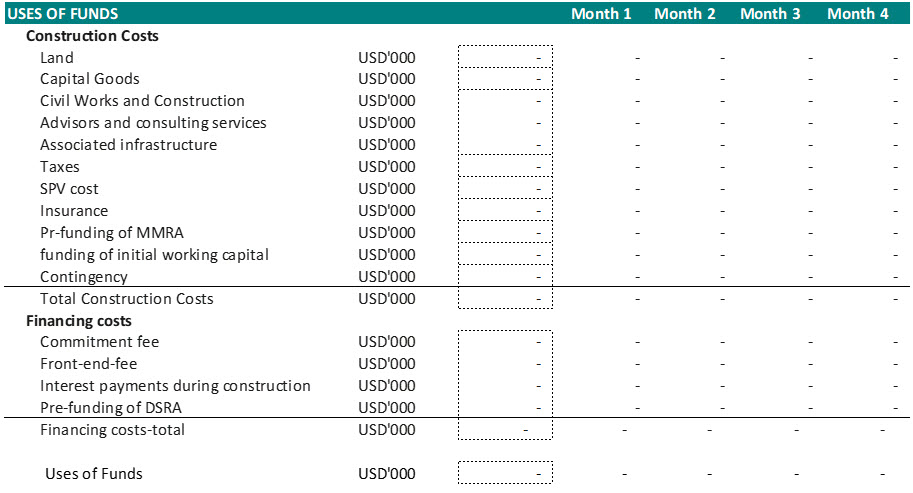
3. At early stage, provide spare items in the cost to accommodate for future changes
If you are at early stage of the project and the majority of contracts are not yet firmed up and you are still running the negotiations so leave some spare items in the costs to have the flexibility to add additional cost items where needed.
4. At early stage, model multiple financing instrument
Make sure you model at least 2 tranches of senior debt, 1 tranche of subordinated debt, pure equity, and shareholder loan. This will provide flexibility to accommodate for future changes and also enables you to make suggestion to your team on the impact of adding different funding instruments. For example, what if you add a mezzanine tranche? How can the project’s economics be improved if there’s a grant or concessional debt available to fund a %s of the project cost? Or on equity side, shareholder loan, versus pure equity?
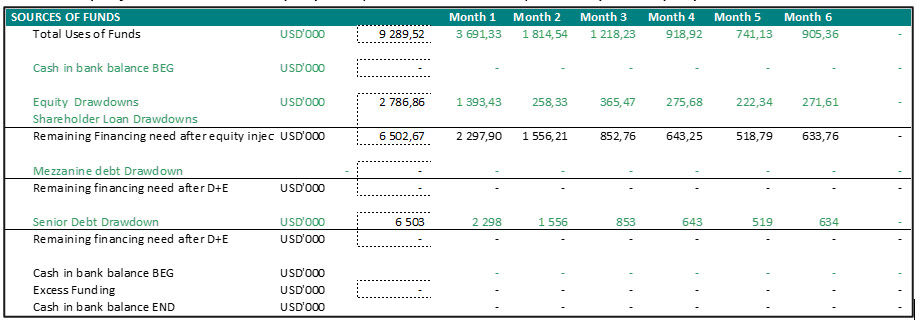
5. Don’t leave the model iterative: Solve the circular reference issue in S&U with VBA.
Most of the time, there’s circularity in the sources and uses of funds statement. This is because total project cost contains financing costs which depends on the level of debt and debt itself is sometimes sized using the total project cost. You can not leave the circular reference to run freely. It’ll make your model unstable, prone to errors and slow! There are different ways you can sort this out. If there’s a way you can use algebra, then go for it. Most of the time it is not possible, so you need to use VBA macro. You can either use the traditional way of copy and paste. the most efficient way is to use Edward Bodmer’s parallel model approach. For more on this read the below article:
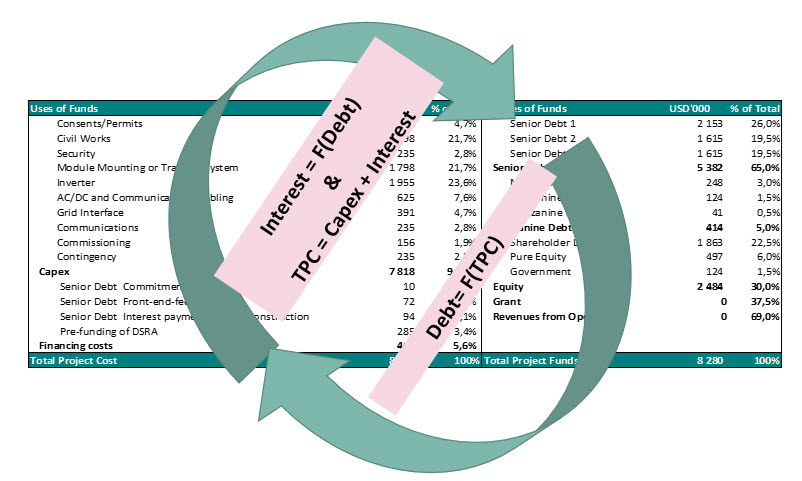
6. Sources = Uses
In the base case, total uses in each model period should equal the uses of fund meaning that there’s no cash shortfall. Therefore, a check should be built in the model to check for this and notify the user if in any model period the sources and uses do not match.
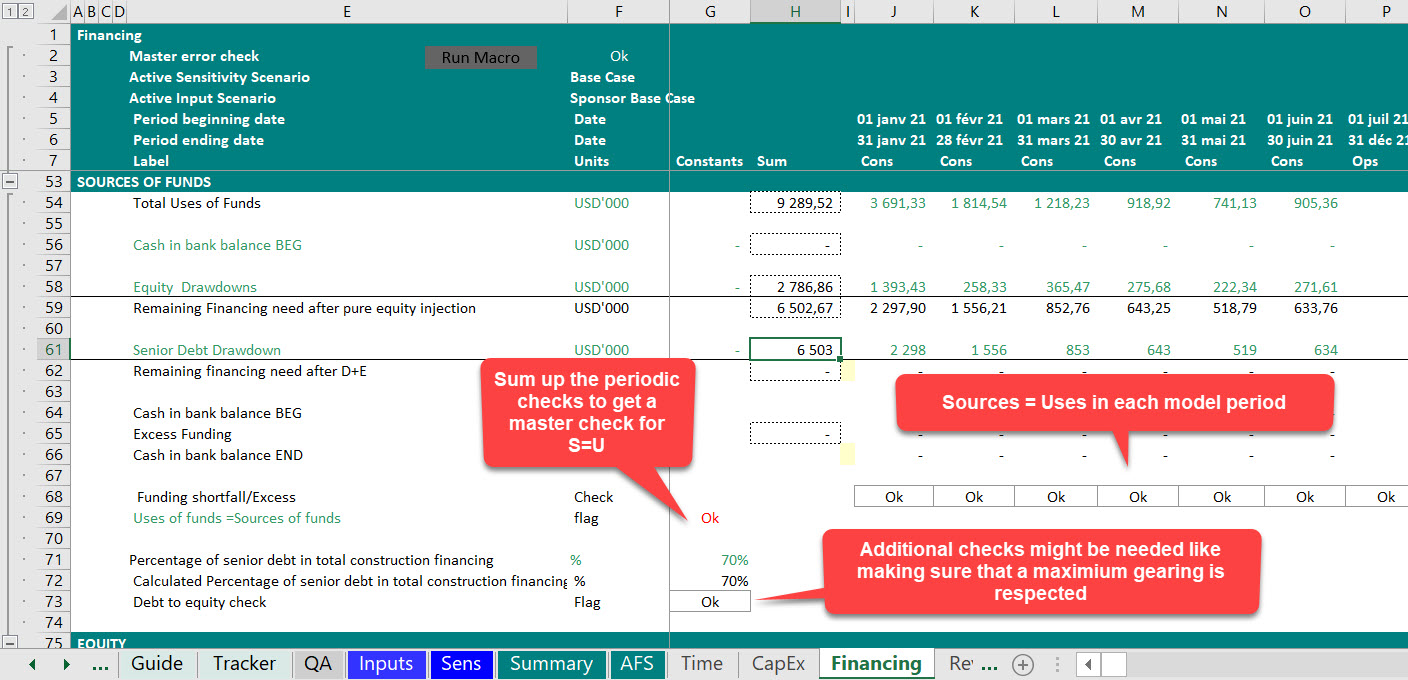
7. Summary Sources and Uses
The summary Sources and Uses is included in almost all project documents and sometimes the details period by period is also included as an annex.
That’s is why it is important to include a summary sources and uses in the “Summary” sheet in your model.
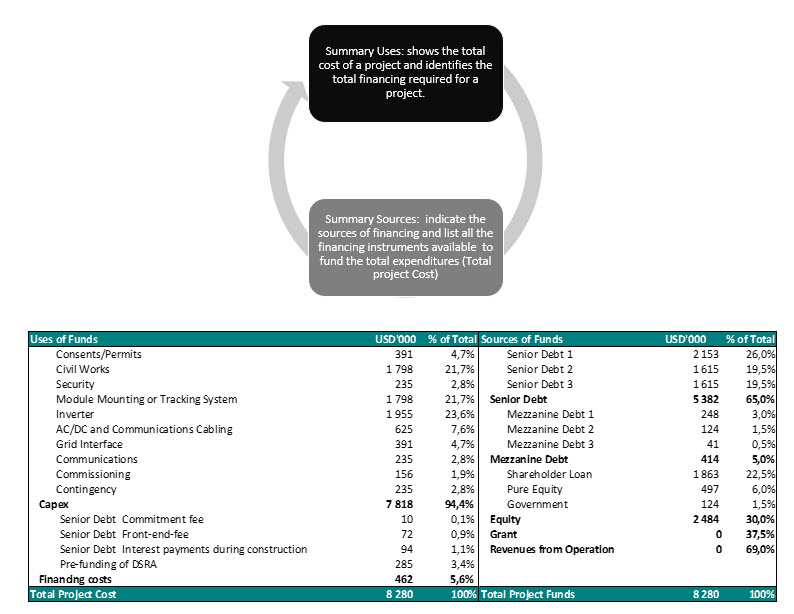
8. Chart for summary S&U
Types of charts to use for visualizing the summary sources and uses of funds are mostly pie charts and bar charts.
When you have more than 6 items in either sources or Uses, then it is better to use a bat chart.
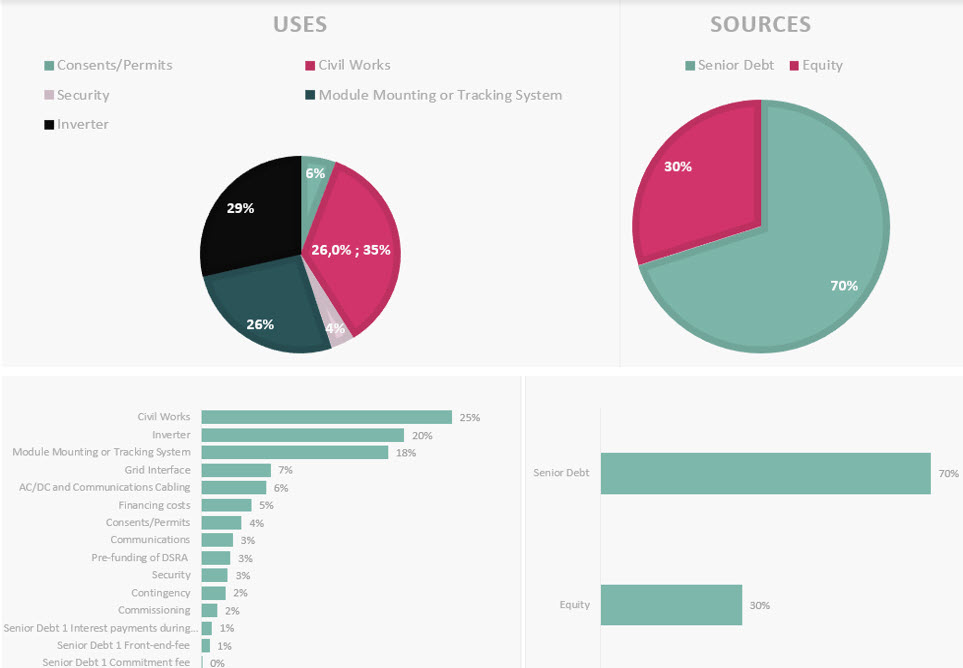
That’s all I want to cover on S&U. I would love to hear your thoughts and feedback on the Sources and Uses of Fund and if you have anything else to add, please let me know and I will add to the list.
Thanks and happy modelling.
Hedieh

